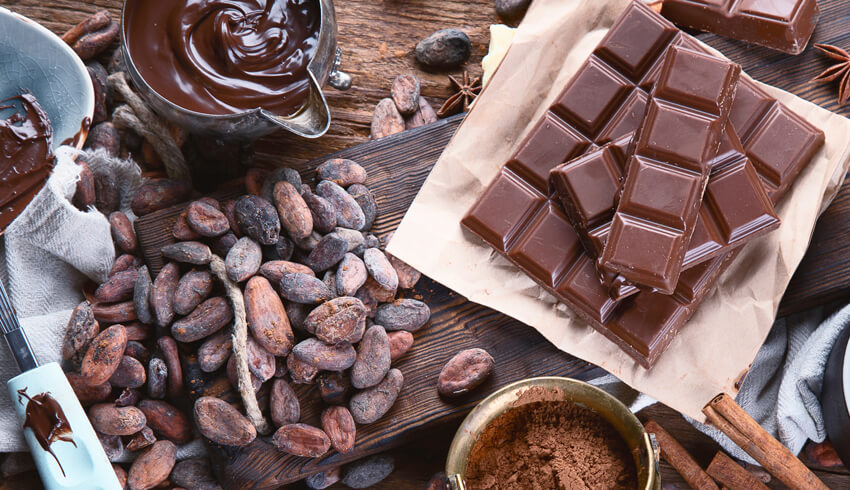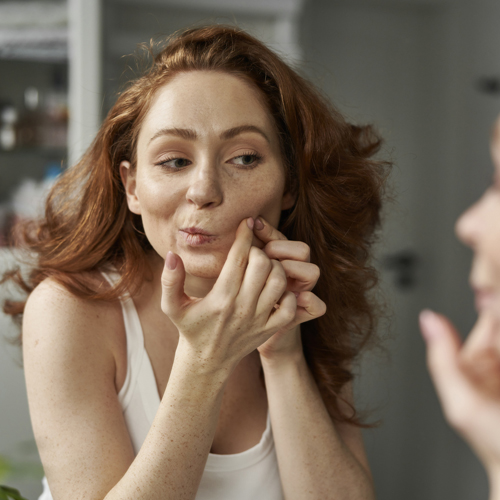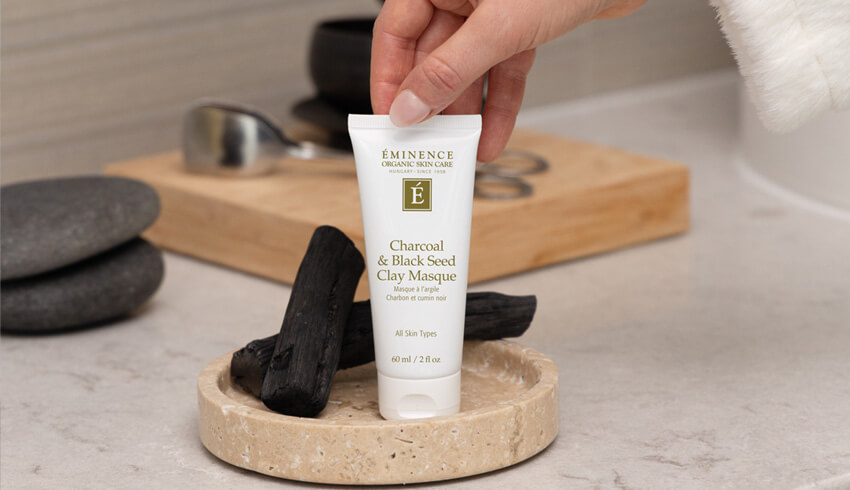
Chocolate: It’s one of the world’s favorite foods, has inspired countless desserts and sweetened our holidays. Sadly, despite this universal obsession, chocolate also gets a bad rap for its association with acne. But does chocolate really cause acne? We went on a quest to unwrap the truth about this sweet and its effect on our skin.
Does Eating Chocolate Cause Acne?
Before we get into the details, keep in mind that most research focuses almost exclusively on male subjects. Many studies also concentrate on younger age groups, as opposed to middle or older age brackets, and primarily consider those with acne-prone skin.
Let's start with the good news. Much of the research around chocolate and acne concludes that chocolate on its own does not cause acne. Rather, it may be a high-glycemic diet that is the trigger (more on this topic below). If your dermatologist determines that your diet affects your acne, you may wish to discuss which foods to avoid, and chocolate could be on that list. However, the causes of acne need to be assessed on a case-by-case basis. There are many reasons why you may suffer from acne (for example, hormones could be the culprit), so consult your dermatologist before making any changes to your diet or skin care.
The Relationship Between Chocolate and Acne
Now for the bad news. Although chocolate may not cause acne, at least one study shows a correlation between chocolate and the "exacerbation of acne." This study confirms a “dose-dependent” relationship between chocolate and acne. In other words, researchers found that the more chocolate was consumed, the more acne worsened. Although we need more research on the topic, the data suggest a potential link between chocolate and acne.
What Type of Diet Causes Acne?
So if chocolate aggravates acne but doesn't necessarily cause it, what triggers initial breakouts? As mentioned, when it comes to diet, acne breakouts show up more likely due to the consumption of sugar found in chocolate rather than the cocoa itself. When chocolate is combined with other high-glycemic foods filled with sugar and simple carbohydrates, this overall diet may potentially provoke acne breakouts. Similarly, the American Academy of Dermatology suggests that, rather than pointing to chocolate as the culprit, trying a low-glycemic diet might help. Healthline also recommends that, to avoid breakouts, you should " ... keep an eye on added sugars and simple carbohydrates throughout the rest of the day."
What Is a High Glycemic Diet?
For most people, overall nutrition plays a huge role in breakouts and chocolate consumption is just a small part of a “bigger puzzle.” High glycemic diets that are full of sugar, carbohydrates and fat — including sugary drinks, cakes, cookies and processed bread, cereals and pasta — can trigger increased sebum production and raise your blood sugar quickly.
A diet high in sugar and processed foods (think: anything packaged) can lead to inflammation, which may trigger or worsen acne in some people. Low glycemic foods, on the other hand, may reduce the amount of acne you have, findings suggest. These include vegetables, steel-cut oats, some fresh fruits (berries are a good option), eggs, lean animal proteins and beans.
If your dermatologist believes your acne is diet-related, they may suggest a low glycemic diet where you monitor your sugar intake and simple carbohydrate consumption. Keeping a food diary to track how food choices affect your skin can also make it easy to discover insights into your skin’s unique triggers. Remember that everyone's skin is different and always consult a dermatologist for their insights before making any major dietary changes.

Individual Variation
The effect of chocolate on acne can vary from person to person. Some people may be more sensitive to sugar, which can cause inflammation in the body and cause acne. Dairy can also be a culprit, which means it may be more the “milk” than the “chocolate” in your milk chocolate bar that is to blame. It’s thought that the way these foods can increase insulin levels may boost oil production. However, whether or not this causes breakouts will depend on your individual skin. Because everyone’s skin is different, always consult a dermatologist before making any major changes. Your precious chocolate (in moderation, obviously) may not be the issue.
Could Other Factors Be Causing Acne?
As mentioned, acne is a complex condition with several potential triggers. Some of the factors that can influence whether or not your skin is prone to breakouts include the following:
Genetics: Some people are genetically more prone to their sebaceous glands getting inflamed by hormones, oil and bacteria. The odds are that if one of your parents had moderate to severe acne, you are likely to experience symptoms as welI. In other words, mom and dad (not chocolate) may be to blame.
Hormones: Hormones influence acne at all ages, with hormonal fluctuations often increasing sebum production and leading to breakouts. Changes in the body’s androgen levels, which are common during puberty, menstrual cycles or pregnancy, can trigger acne. Typically, hormonal acne appears on the lower half of the face, such as along the chin and jawline.
Skin Type: Oily skin is thought to be caused by a genetic predisposition to overproduce a hormone that causes the skin’s sebaceous glands to create excess sebum. When the skin produces too much oil, its pores enlarge and stretch in an attempt to contain the surplus. If excess oil becomes trapped, it can combine with the dead skin and bacteria that have settled inside the pore, causing breakouts. The severity of your acne breakouts can depend on your body’s propensity to produce excess oil.
Skin Care: Having acne or being prone to breakouts doesn’t mean that your skin is dirty, but your skin care routine can absolutely have an effect on your breakouts. Including gentle cleansing and acne-fighting ingredients like salicylic acid and clay is generally recommended, regardless of chocolate consumption.
How To Choose Chocolate That's Best for Your Skin
Despite the link between acne and chocolate, what if you can't resist the occasional nibble? We recommend reaching for chocolate with less refined sugar and a very short ingredient list. The best choice is an antioxidant-rich dark chocolate with at least 70% cocoa, instead of milk or white chocolate which contains more sugar and additives.
Healthline includes the following tips when choosing quality dark chocolate:
- High-quality dark chocolate lists chocolate liquor or cocoa as the first ingredient.
- Refrain from dark chocolate with sugar first on the ingredient list.
- Avoid dark chocolate with milk, artificial flavorings or trans fats (these can appear as hydrogenated or partially hydrogenated oil) on the ingredient list.
- Selecting a chocolate product marked as fair trade and organic ensures that the farmers who worked to secure the cocoa beans are being paid correctly. Plus, your beans are less likely to have been exposed to pesticides or nasty chemicals.
Have you noticed any difference in your skin after eating chocolate? Let us know in the comments below. And if you’re looking to indulge in a chocolate treat for your skin, try the Eminence Organics Chocolate Mousse Hydration Masque. You can also view our acne products here.


